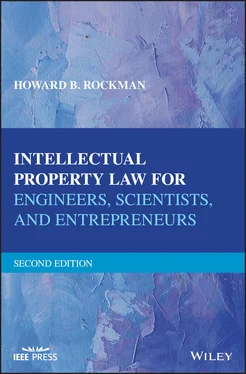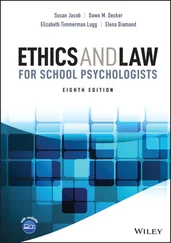During the first two or three centuries following the inception of Kings Courts in England, English law underwent a hardening process where the remedies that were offered by the courts became standardized and quite limited. As a result of these limited remedies, courts of equity were created.
Consider this example. A contractor is hired to build a structure for Able. During the excavation, Baker, the next‐door neighbor, notes an impending separation of her house from its foundation. Baker’s walls start to crack and the ceiling begins to bulge. At this point, under common law, Baker has no remedy against Able since no real injury has occurred yet. Under common law, Baker would have to await whatever damages might be forthcoming, such as destruction of the house, and then sue Able to recover compensation for such damages.
However, under equity, Baker can do something now without waiting until her home is destroyed, by seeking a temporary injunction or restraining order to halt the excavation next door until something more appropriate can be done to prevent damage to her house.
The common law courts would not do any of the following: (a) prevent a wrong from taking place; (b) order persons to perform their obligations; or (c) correct mistakes. These gaps in the law were filled by the equity courts, known today as the Courts of Chancery in some jurisdictions. This was because, in the early days, the kings delegated their chancellors with the responsibility of deciding “equity” cases involving these “unusual” remedies. In most states today and in the U.S. federal court system, law and equity have been completely combined, whereby you can seek monetary damages and injunctive relief in a single litigation, such as seeking an injunction and monetary damages for infringement of your intellectual property rights.
The remedies in a common law court act “ in rem ,” or upon an object. Equity courts, however, operate “ in personam ” in crafting remedies, which are directed to ordering a person. The common equity remedies of injunction and specific performance are directed to prevent or to compel a person to do, or not to do, something. Divorces, mortgage foreclosures, accountings, reformation of contracts, and injunctions against patent and copyright infringement are examples of equity remedies. The word “equity” itself defines a system where the court can act in any way necessary to secure a right or remedy for a wrong. Also, if a remedy must be invented to serve a particular purpose, that can be accomplished by a court of equity.
Injunctive relief can be either permanent or temporary, and it is an act in contempt of court for anyone who has knowledge of the order, and who is subject to it, to fail to obey the order. Such contempt can be punished by monetary fine or imprisonment. Specific performance arises in connection with contracts involving land, and celebrity contracts such as concert performances. In land deals, if a seller refuses to deed land to a buyer after a lawful contract has been signed by all parties, the seller may be forced to part with the land by an order for specific performance. Likewise, a performer who tries to back out of a concert performance could be forced by a court of equity to proceed with the performance if undue hardship would occur were that celebrity not to perform.
Specific performance could also apply to contracts for sale of an antique or a rare painting or other one‐of‐a‐kind item. The courts of equity have substantial power, and also have the ability to issue a remedy both by way of injunction or specific performance, and the award of monetary damages. Patent infringement and trade secret cases are examples of such equity matters where the plaintiff seeks monetary damages for past infringement by the defendant, and an injunction prohibiting the defendant from any further acts of infringement.
To obtain preliminary injunctive relief, one must prove all of the following to the court’s satisfaction:
1 A substantial likelihood of ultimate success on the merits at the termination of the litigation.
2 Irreparable injury that cannot be compensated by monetary consideration.
3 That the harm, if the relief requested is denied, outweighs the harm if the relief is granted.
4 That public interest is not disserved by granting the injunction.
A situation of dumping toxic materials, operating unsafe machinery, or having continual smoke in a workplace would be a basis for seeking equity jurisdiction. These types of injuries are irreparable if allowed to continue. A Court of Equity may permit the granting of a temporary injunction, lasting for the remainder of the litigation, if you can establish the preceding four requisites for granting a temporary injunction. In equity cases, there is no jury.
Keep in mind that a Court of Equity can enjoin situations before they get to the point of damages, such as unlawful waste disposal, even though no one has yet been injured by such disposal.
2.9 U.S. COURTS, STATE AND FEDERAL
One of the hallmarks of the beginning of civilized behavior was creating a system for best determining the truth of an accusation. Court trials with a judge, jury, and attorneys representing the plaintiff and defendant have not always been used. We have seen enough movies and television shows that indicate that the earliest form of trial was usually by battle. The accused and accuser, or their representatives, faced each other in battle, with the outcome determining the justice of the accusation. The shortcomings of justice and equity being based on such a system are obvious.
In many early civilizations, trial by battle was replaced by trial by ordeal or trial by jury. The Code of Hammurabi required trial by ordeal, such as throwing the accused into the divine river. If the river held the defendant, for example, if he could not swim, the guilty verdict and punishment were delivered simultaneously. However, more realistically, trial by a jury of your peers in one form or another existed in many ancient civilizations. Our present jury trial system developed with the common law, and is now guaranteed in the Sixth and Seventh Amendments of the U.S. Constitution in both criminal and civil cases.
Keep in mind that a jury must usually determine the facts of a particular occurrence after that occurrence has happened. The jury bases its decision upon the evidence that the court allows it to hear, and on the instructions in the law given to the jury by the judge. Keep in mind that, once an event has happened, and all witnesses to that event are unavailable, there is no way of knowing exactly what happened, and the facts may never truly be known. The jury system, although possibly flawed, is still the best system known for determining the truth. As Churchill once remarked about democracy, it is a bad form of government—however, it is better than all the rest. In my judgment, the same principle can be applied to the jury system.
In the United States, a court system exists for each state, as well as a system of federal courts. Both the federal and state systems provide an ultimate tribunal, the federal Supreme Court and the state’s highest courts, respectively. Beneath the supreme court and highest state court in each system are the appellate courts. The appellate courts handle appeals from the lower courts. The lower courts are designated as district courts in the federal system, and usually as county courts in the state systems. One anomaly is that the lowest court in the State of New York is designated the Supreme Court, the highest court is the New York Court of Appeals.
2.10 THE FEDERAL COURT SYSTEM
2.10.1 The Supreme Court
The U.S. Supreme Court is the highest tribunal in the United States. The final court of appeal, the Supreme Court is established under Article III of the U.S. Constitution, which provides for a Supreme Court and whatever inferior federal courts that Congress may from time to time require. Since the Constitution mentions “a” Supreme Court, all nine justices sit at one time on all cases, and the court is not divided into smaller panels, although this procedure would at least triple the ability of the Supreme Court to hear cases.
Читать дальше












